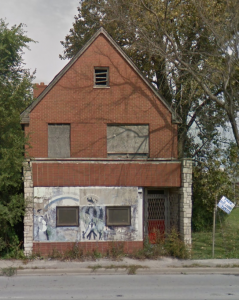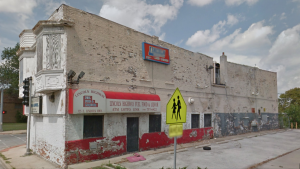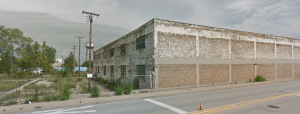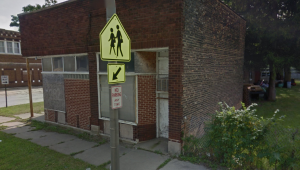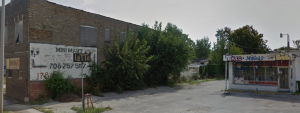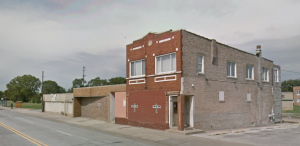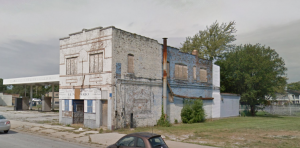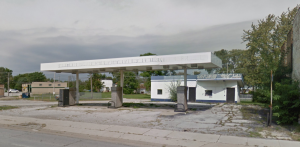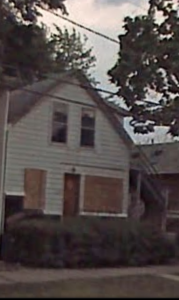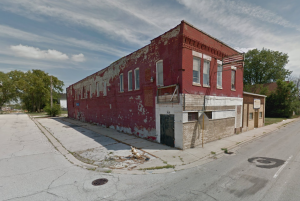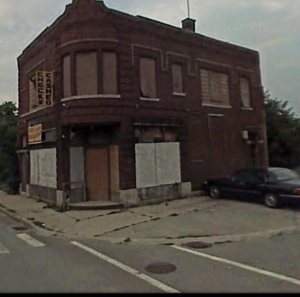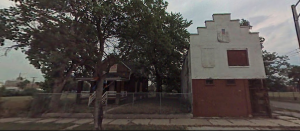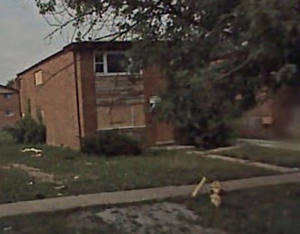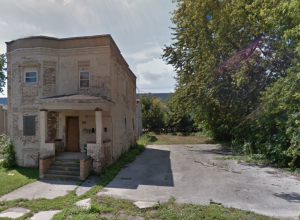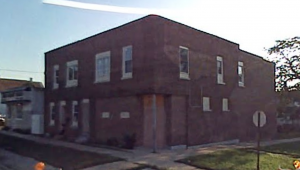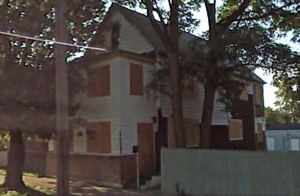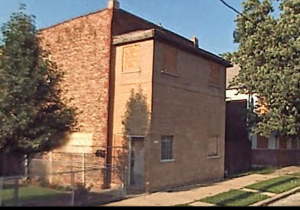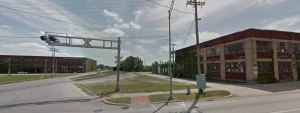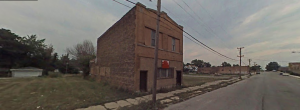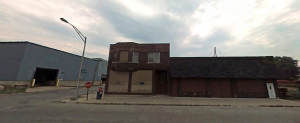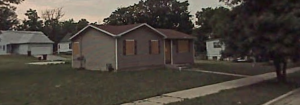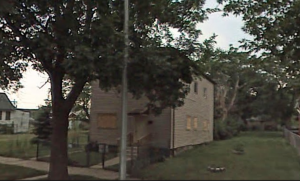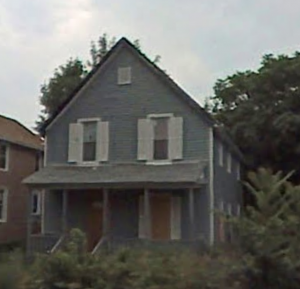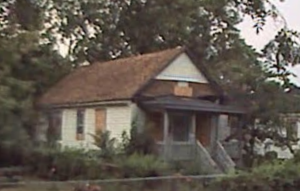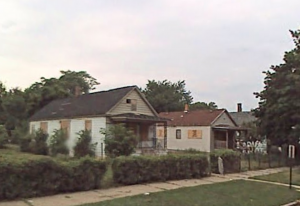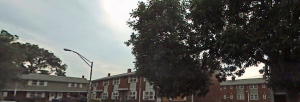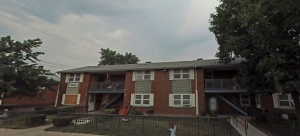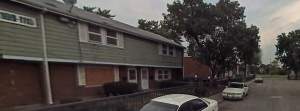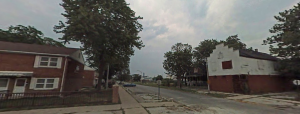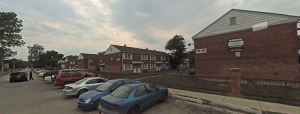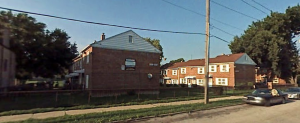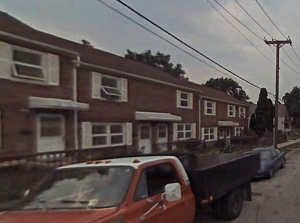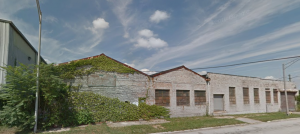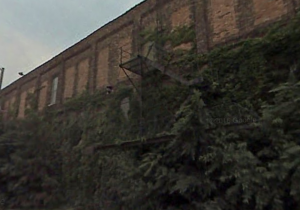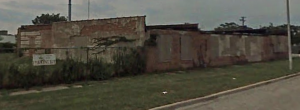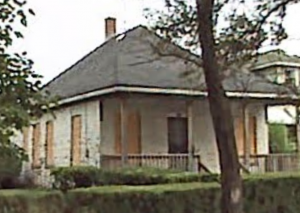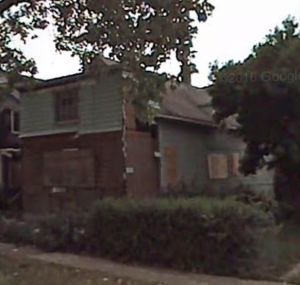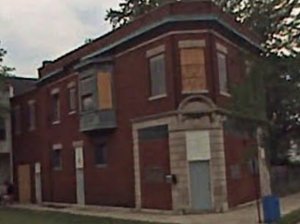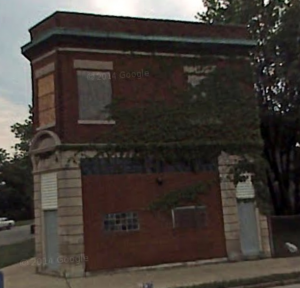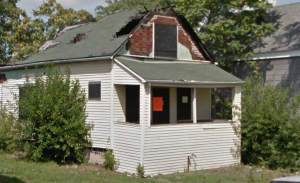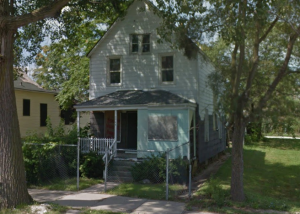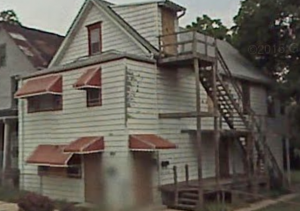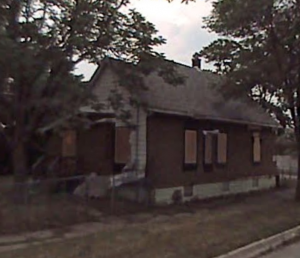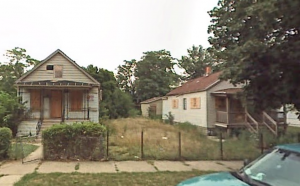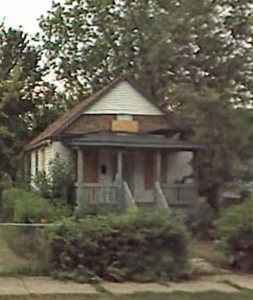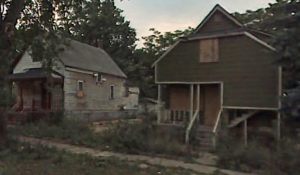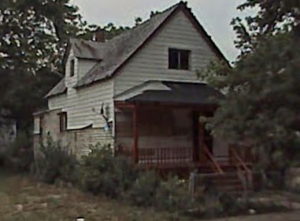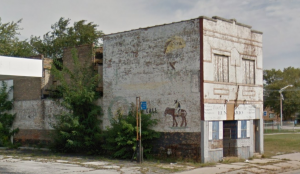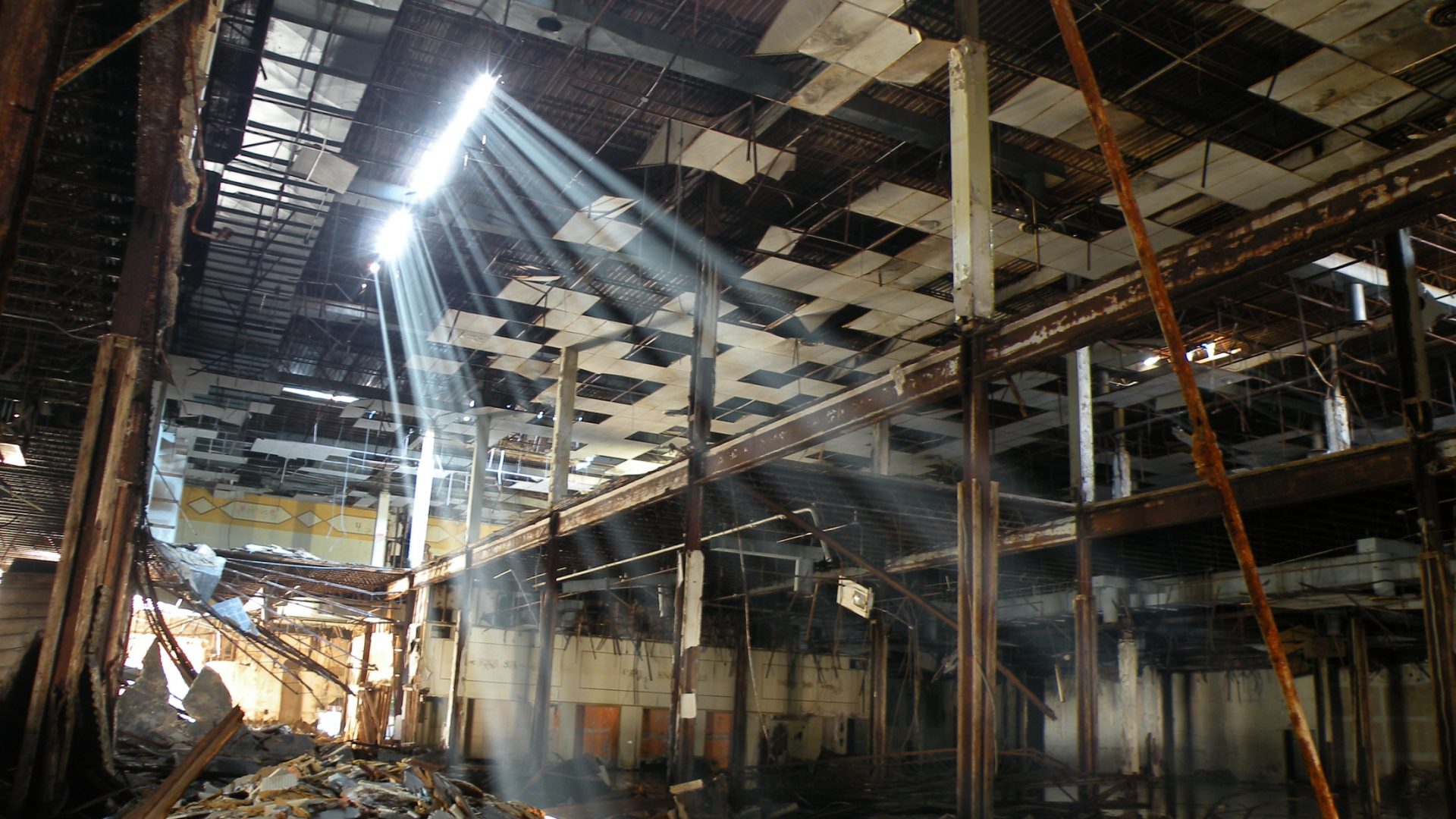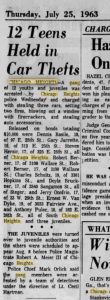| Settled by | Absalom Wells; | |
|---|---|---|
| Year infiltrated | 1964 | |
| Crime impact | Part | |
| Worst areas | The area bounded by Joe Orr Road on the north, 16th Street on the south, State Street on the east and the railroad tracks on the west is a very dangerous area and the most violent part of town. Other areas that are tough and higher on crime is Vollmer Road on the north, Independence Drive on the south, West End Avenue on the east, Coolidge Street to Chicago Road on the west. Another tough area is Boston Street to Andover Street on the north, Beacon Boulevard on the south, Euclid Avenue on the east, Western Avenue on the west. The fourth area to mention that is a little rough is 207th Street to Division to Route 30 on the north, Hickory Street on the south, Ashland Avenue on the east, Western Avenue on the west |
|
| Suburban projects | Sunrise Apartments, John Mackler Homes, Daniel Begin Homes |
The first non-Native American to settle this community was Absalom Wells in the year 1833 near Thorn Creek and soon a small farming community was developed in the area by the 1840s that became known as Thorn Grove.
In the year 1892, Charles Wacker (Wacker Drive in Chicago is named after him) created an organization of real estate brokers and created the Chicago Heights Land Association that geared at making this rural town called “Bloom” into a major industrial community. Wacker worked with many industrial companies to land their manufacturing into the new community of Chicago Heights by offering free land parcels for the many factories to be built. Soon Chicago Heights boomed with Italian, Polish, Slovak, Lithuanian, Irish and even some African Americans as they moved into houses built near all the industrial businesses on the east side of town.
Within no time in the 1890s a whole booming town was built up that had schools, banks, retail businesses and entertainment. The entertainment aspect of the community became popular in the 1920s when prohibition swept the country, bootleggers and organized crime found this suburb to be ideal to offload several barrels of fine bootlegged hooch in exchange for top dollar.
The Chicago Heights community had an incredible sense of pride and was a happy community, even during the Great Depression years in the 1930s when jobs in the many industries in town became scarcer. The community would bounce back tenfold at the onset of World War II when steel and chemicals were in high demand from the many factories, now there was almost too much work to get done and employment was very much available.
After World War II the community grew tremendously as the town made use of the land on the north side and west side of town building several houses as the population grew, the 1950s proved to be the biggest decade of expansion as roughly 10,000 more residents moved into the community, some of which were African American that made up about 19% of the town’s population by 1960.
In February 1955, the federal government approved a $2 million public housing project plan that would put in 200 row house units on the village’s east side between 11th Street and 16th Street. These projects were to be put in as a result of Chicago slum clearance in the Bronzeville area of Chicago, the project was scheduled to be built for these impoverished African American families. The construction of the project was delayed for 7 years.
In the year 1962, construction began and was finished on the Sunrise apartments, John Mackler Homes and the Daniel Bergin Homes which were all part of the 1955 plan by the federal government to relocate African American families from Chicago and provide them public housing. Many white Chicago Heights residents did not approve of these public housing projects and began to move out of the east side of town that was known as the Bloom district as they either moved into other communities or they took up residence on the north side or west side of town.
As the 1960s decade progressed the community became increasingly segregated as it became understood that blacks were to reside on the east side while whites were to live on the west side or north side.
Poverty became a major issue for young black youths living in the Bloom and Hill sections of town as everyday living was becoming rough. In the year 1964 the Black P Stones Chicago based street gang made a conquest of the south suburbs and one of those suburbs targeted became Chicago Heights. The first Ranger leader was Jerome Branch who can be credited as the founder of the Chicago Heights Black P Stones. The Black Disciples also arrived around this time but I’m not sure when they came to the south suburbs but it was in the 1960s.
The Black P Stones put together a major recruitment drive on Chicago Heights’ east side in the Hill and Bloom sections of town, and they especially recruited large numbers in the public housing projects. The Black P Stones were Chicago Heights’ first street gang and most certainly would not be their last. When the Stones arrived they were known as Blackstone Rangers back then and the first south suburban villages to experience Rangers were Harvey and Dixmoor and they soon spread to all the other south suburban villages in 1964, hence, how Rangers came to Chicago Heights.
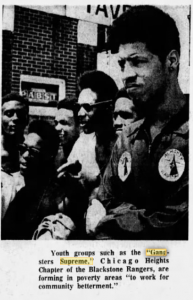

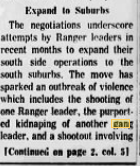


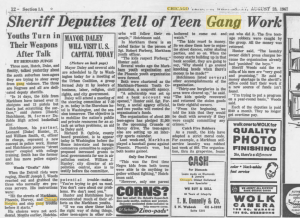

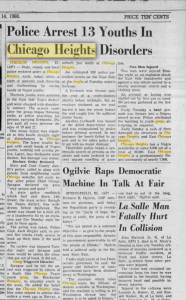
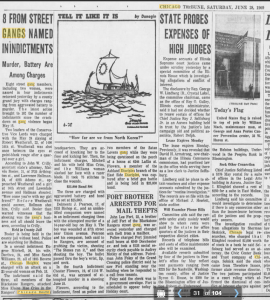
In July of 1971 several gang related shootings were reported as Black P Stone groups were shooting at each other. One particular group of youths went on a rampage on July 30th 1971 shooting 3 individuals in separate locations killing one of their targets (Chicago tribune Page 11, July 31, 1971).
Gang violence and crime became a major issue in the east side of town especially after the old retail strip began to close down and many layoffs began happening in the various manufacturing buildings. The east side completely dried up and sunk into deep poverty which was a breeding ground for more gang activity.
Racial tensions began to grow between blacks and whites in the 1970s not only because of the frustration of the local economy falling apart but also because many white residents felt the projects, gangs and poverty stricken black residents on the east side were causing the entire community to suffer. This brought about some cases of deliberate fires being set at the Sunrise project which was the most troubled of the three projects. Some of the fires were discovered to be set by a former Chicago Heights police officer that had turned into a murderer and drug dealer, who claimed he was paid to set fires to the projects in 1979. This would not be the last time deliberate fires were set, another such incident occurred on the west side of town at the Sunset apartments. As I stated earlier the west side was understood to be a white community and that was still supposed to be the case in 1985 when a major scandal indicted top public officials and inspectors for deliberately declaring the Sunset apartments condemned when they were, in fact, still livable. The officials also snuck in there at night and set fires to various apartments, witnesses even claimed to have seen police officers sneaking around the buildings. Mayor Charles Panici was convicted of his involvement in this incident for helping plot the destruction of the 160 unit complex (Chicago Tribune Matt O`Connor, June 19, 1992). Panici was mayor since 1975 so it very possible he could have been responsible for the Sunrise fires as well but nothing ever implicated him of those fires that is just a theory.
The reason given for the Sunset fires was that a “bad element” had moved into the complex and many residents wanted to see the apartments go away, but in reality the likely reason was because many residents did not want lower income blacks in that side of town.
Chicago Heights would continue to see growing gang activity in the 1980s as new Chicago based organizations moved into the community such as: Latin Kings, Latin Counts, Imperial Gangsters, Mickey Cobras, Black Disciples, Black Gangster Disciples and Four Corner Hustlers.
The 1980s ushered in a wave of Mexican migration to the community on the far southeast side. Latin Kings, Latin Counts and Imperial Gangsters opened up territory in the Mexican community in Chicago Heights but the Imperial Gangsters would not last long.
The east side soon became the scene of many rundown buildings and vacant houses, over the years many decayed structures were torn down but only vacant lots were left where those buildings and houses once stood, high rates of poverty caused many businesses and homes not to make it.
The 1990s saw many incidents of gang violence in this community. In 1994, more anti-gang police units were created to curtail most of the violence especially the violence in the public housing projects.
Chicago Heights still remains a community with a very high crime rate and heavier amounts of gang violence. The community also suffers from annual murders with a minimum of at least 3 reported homicides in a year. The east side and southwest side continue to be the roughest parts of this community where most of the gang activity and violence occurs. The east side still has major issues with abandoned buildings, homes and vacant lots, many homes and buildings have been abandoned for several years making the east side a very blighted area. The housing projects and several apartment complexes have been renovated in recent years.
All images below are photos of vacant properties. All images below are courtesy of Google Maps.
